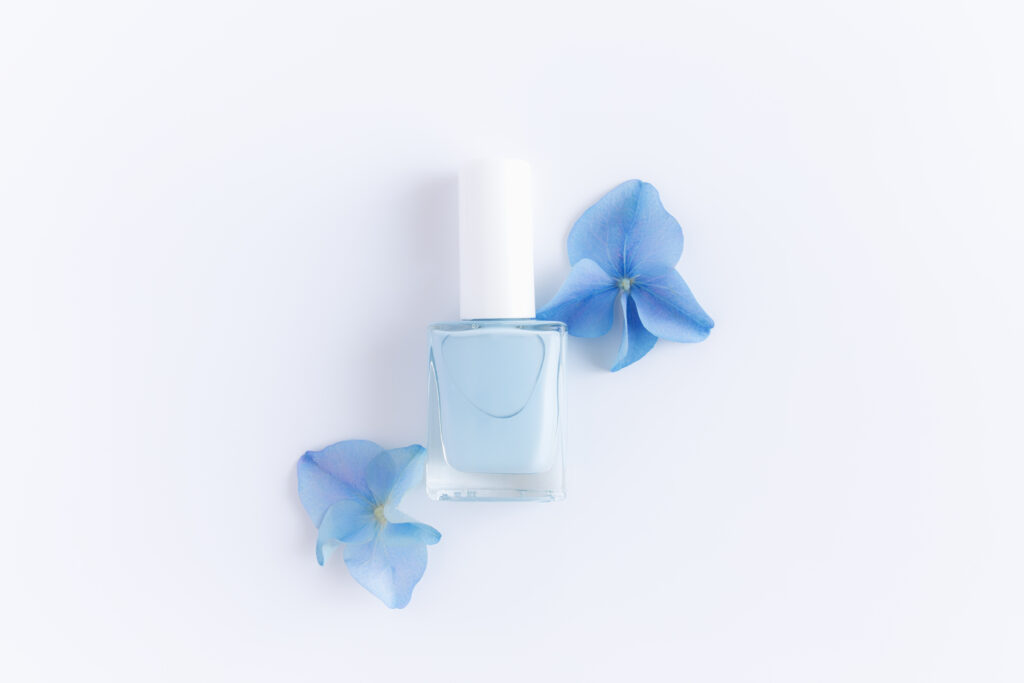There is nothing quite like newly fresh-painted nails but we sometimes forget about the chemicals we’re putting on our bodies. For example, what is nail polish thinner made of and what does it actually do? Don’t worry, this article will give you all the answers.

Nail polish thinner is commonly made of ethyl acetate, isopropyl alcohol, toluene, butyl acetate, or heptane. It is a chemical solution that acts as a replacement solvent for dried-up or thickened nail polish.
Is Acetone The Same As Nail Polish Thinner?
Acetone is often recommended as a quick replacement for nail polish thinner. It, therefore, raises the question of whether they’re truly interchangeable. In short, no. Acetone is not the same as polish thinner.
Acetone can work to thin your nail polish when used in small amounts. However, what it does best is dissolve your polish.
Use too much and you will damage the polish. Nail polish thinner, on the other hand, will restore evaporated solvent without messing with the polish’s composition.
Some nail polish thinners may contain small amounts of acetone. These will still work as intended but may be worse for your polish and nails in the long run.
This is because the acetone will dry out the skin around your nails in addition to weakening the polish.
The effects of acetone are enough to warrant avoiding it most of the time. That said, the effects are not so harmful that you cannot use acetone from time to time.
Just don’t use it to thin your favorite nail polish.
What Is Nail Polish Thinner Made Of?

There are plenty of polish thinners out there. Each one with a slightly different ingredient list. What makes them the same is that they are made out of chemical solvents.
These solvents are what enable thinners to restore goopy nail polish.
Some of the common ingredients are:
- Ethyl acetate
- Toluene
- Butyl acetate
- Isopropyl alcohol
- Heptane
- Acetone
These solvents are the same as those in most nail polishes. When the ingredients of the thinner and polish match, you will have the best success restoring the polish.
Each ingredient has its own properties and associated health risks.
For the most part, they are all considered flammable and irritants. They are safe when applied to your nails and polish.
What Is The Main Ingredient In Nail Polish Thinner?
The main ingredient in nail polish thinner depends on the type of thinner.
Many thinners have just two or three ingredients and they work best when they match the ingredients of the polish.
However, there are a few types of polish thinner that are meant to be exceptionally versatile. They tend to include:
- Butyl acetate
- Ethyl acetate
These versatile nail polish thinners often have butyl acetate or ethyl acetate as the main ingredient and are some of the most common solvents found in nail polish.
What Is Gel Nail Polish Thinner Made Of?
Gel nail polish behaves slightly differently than regular nail polish and this is due to its ingredients.
Gel nail polish does not set because solvents evaporate like conventional polish. Instead, it is cured by exposure to UV radiation or LED lights.
Consequently, gel nail polish thinner is made of different ingredients than those listed above.
When gel polish becomes too viscous to use it must be diluted to return it to a proper viscosity. At the same time, it must not affect the curing time.
The thinners used in this instance are composed of the following ingredients:
- A monomer
- A photoinitiator
These ingredients are vague as many gel polishes contain different monomers and photoinitiators.
If a gel polish thinner did not contain both of these ingredients it would affect the time it takes to cure the gel when used. They would still work, however.
So while it is important to use the correct thinner for the type of polish it will still work in many cases.
What Can I Use Instead Of Nail Polish Thinner?
There are a few things you can use if you don’t have any polish thinners or can’t wait for your order to arrive.
These improvised polish thinners will work but may have added risks such as shortening the lifespan of your polish.
Before that, there is one thing you can try to return nail polish to the correct viscosity that doesn’t require adding anything.
Rolling the bottle between your palms will warm and mix the polish. This can restore the polish if it isn’t too far gone.
If that doesn’t work you can try adding one of these items:
- Rubbing alcohol
- Nail polish remover
- Pure acetone
Using Rubbing Alcohol As Polish Thinner
Using a high percentage of rubbing alcohol can serve as a replacement solvent for nail polish.
How to do it:
- Open the nail polish you want to be thinned.
- Add 1 or 2 drops of rubbing alcohol.
- Close the nail polish.
- Hold between your palms and roll.
- Check the consistency. Add 1 more drop and repeat as needed.
Unfortunately, rubbing alcohol may break down your nail polish as it thins it.
Using Polish Remover As Polish Thinner
Like rubbing alcohol this will damage your nail polish so it is a last-minute solution. The acetone in most nail polish removers is what makes this work.
How to do it:
- Open your nail polish.
- Add 1 or 2 drops of polish remover.
- Close the bottle.
- Roll between your palms.
- Check the consistency. Repeat as necessary.
Using Pure Acetone As Polish Thinner
Last is the worst backup. Acetone will damage your nail polish and dry out your nail, nail bed, and surrounding skin. That said, it should do the job before doing so.
How to do it:
- Open your nail polish.
- Add 1 drop of pure acetone.
- Close the bottle.
- Roll between your palms.
- Check the consistency. Repeat as necessary.
Things To Know Before Using Nail Polish Thinner

As with every aspect of nail polish maintenance, there are a few things you should know about nail polish thinner.
The chemicals these thinners are made of are thoroughly tested but can still pose a risk if improperly used.
Nail Polish Thinner Is Flammable
Many of the chemicals used in nail polish and its thinners are quite flammable. Worse still, they will often burn until the fuel source is exhausted.
Make sure all nail products are kept away from fire or extreme heat. Additionally, do not smoke while doing your nails.
Nail Polish Thinner Won’t Work On Every Polish
As I discussed above, the solvents in nail polish are not always the same. If your nail polish thinner does not contain the same solvents that your polish used to it will not work as effectively.
This is especially true with gel nail polish.
Don’t Shake After Adding Thinner
Shaking your nail polish when it is not dried out can mix it back together. Shaking after adding thinner will only add air bubbles.
These air bubbles will cause problems when attempting to thin nail polish. It is better to roll it between your palms.
Frequently Asked Questions (FAQs)
Nail polish thinner is safe to use according to the included instructions. Keep all nail polish thinner away from open flame and heat sources.
While you could add nail polish remover to nail polish to make it thinner it is not a good idea. The polish may become noticeably thinner, but since the job of polish remover is to break it down, the polish will not be the same. It can become miscolored or not apply properly.
If you store your nail polish in some place where the temperature fluctuates frequently or leave the lid off it will get thick quickly. The solvents in nail polish evaporate very easily when exposed to air.
The best way to keep your nail polish from thickening is to always keep it tightly sealed when not in use. Try to limit how long the bottle is open. Additionally, store the bottles in a cool, dark space. However, even doing this won’t prevent it from thickening. It will only slow it.
